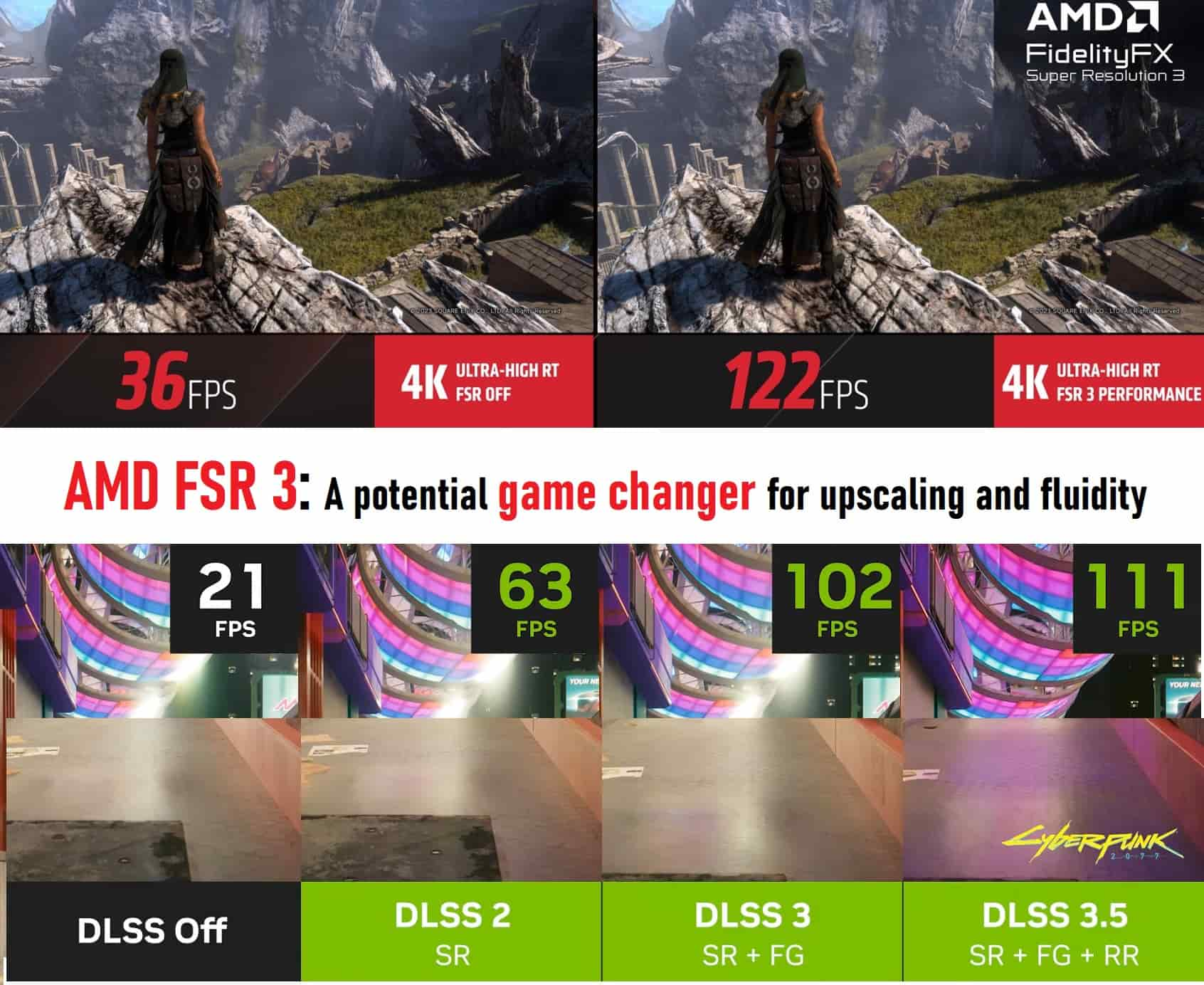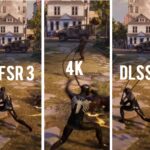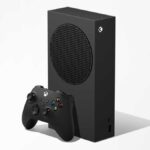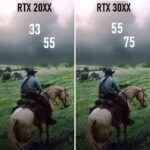AMD recently unveiled their next-generation upscaling technology, FidelityFX Super Resolution 3 (FSR 3). This new version aims to match Nvidia’s DLSS 3 for image quality and motion fluidity. With wider GPU support and integration into major games, FSR 3 could be a boon for AMD graphics cards.
FSR 3’s key capabilities
FSR 3 includes two major new capabilities:
- Enhanced upscaling – An improved spatial upscaler to render games at higher resolutions with minimal artifacts.
- Fluid Motion Frames – Frame generation to boost frame rates for smoother motion.
Together, these features aim to provide:
- Sharper image quality at high resolutions
- Greatly improved motion fluidity in games
Early hands-off demonstrations of FSR 3 have shown promise. But real-world testing will be the real test.
Upscaling: Matching DLSS image quality?
FSR 3’s upscaling is said to be significantly improved over FSR 2.
Early reports indicate FSR 3 can match DLSS 3 for image quality when rendering games at higher resolutions. This could make AMD competitive in upscaling tech.
However, testing will need to validate that FSR 3 upscaling alone outperforms FSR 2. If so, this would be a major step for AMD.
Nvidia has led in upscalers that sharpen visuals with minimal artifacts. FSR 2 made progress but couldn’t match DLSS.
If FSR 3 upscaling quality lives up to its billing, AMD GPUs would become much more competitive for high resolution gaming.
Fluid Motion Frames: AMD’s answer to DLSS 3
The other big innovation in FSR 3 is Fluid Motion Frames, AMD’s equivalent to Nvidia’s DLSS 3 frame generation.
Both technologies work similarly:
- Analyze motion vectors
- Generate new interpolated frames
- Insert these frames to boost frame rates
This makes games feel significantly more fluid and responsive.
AMD uses asynchronous compute for analysis rather than dedicated hardware like Nvidia. This allows wider GPU support but may impact quality.
Real-world testing will determine:
- Actual fluidity improvements
- If image quality holds up during motion
- How much latency is added
Wider GPU support, but limitations exist
A key advantage of FSR 3 is wider GPU support than DLSS 3:
- FSR 3 works on AMD GPUs back to RDNA 1 (5700 series)
- Nvidia 10 series and up can also use FSR 3 features
However, there are some limitations:
- Frame generation requires RDNA 2 or later for AMD, RTX 20 series or later for Nvidia.
- Performance and quality will vary across GPU architectures.
- Asynchronous compute use may limit fluidity boost on some GPUs.
So while FSR 3 is more widely supported, optimal performance will require newer GPUs.
VRR support is vital
One concern raised from early FSR 3 demonstrations is support for variable refresh rate (VRR) monitors.
Without VRR, fluidity gains from frame generation can be lost to screen tearing. AMD is working on VRR support for FSR 3.
Robust VRR support will be vital for FSR 3. Syncing the high rendered frame rate with monitors will maximize gains.
Nvidia DLSS 3 requires G-Sync monitors. AMD supporting open VRR standards would provide an advantage.
Anti-Lag Plus – AMD’s latency solution?
To make frame generation playable, Nvidia DLSS 3 requires Reflex technology to minimize latency.
AMD’s equivalent is Anti-Lag, which reduces latency from rendering pipelines.
Anti-Lag Plus is mentioned with FSR 3 announcements. But details are unclear.
If Anti-Lag Plus can cut latency similarly to Reflex, FSR 3 could work well even for competitive gamers.
Minimal latency from frame generation will make or break the tech for many gamers. AMD needs to optimize this.
Game developer integration is essential
Like DLSS, FSR 3 relies on integration by game developers for best quality.
Access to source code and middleware like Unreal Engine 5 allows more optimization. This can improve image quality and fluidity.
AMD is promoting FSR 3 to developers. But Nvidia’s DLSS has a multi-year head start in integrator support.
Key games where FSR 3 gets optimized integration will demonstrate its true capabilities.
Launch games and release timing
AMD is targeting an early Fall 2022 launch for FSR 3.
Initial integrations will be in:
- Forspoken
- Hitman 3
- Super People
Other major games like Cyberpunk 2077 have announced plans to support FSR 3.
More titles will be needed, but this is a solid start. Nvidia took years to build up DLSS game support.
HyperRX and Radeon Super Resolution
Alongside FSR 3, AMD has announced HyperRX, an rdna 3 exclusive feature set coming in 2023.
HyperRX includes Radeon Super Resolution (RSR) Fluid Motion, which can apply frame generation to any DirectX 11/12 game through AMD’s driver.
While requiring rdna 3, driver-level frame insertion could be an amazing feature. However, quality depends heavily on implementation.
AMD Fluid Motion Technology – filling gaps or gimmick?
RSR Fluid Motion aims to bring motion smoothing to any game by analyzing sequential frames in the driver and generating intermediary frames.
This technique has worked for years in TVs to upscale 30 fps video feeds to 60 Hz or even 120 Hz for fluidity.
However, scaling this to high frame rate PC games introduces new challenges:
- TV implementations often add significant input latency – not viable for PC gaming.
- Without source engine integration, analysis can miss scene details and produce artifacts in complex games.
- Rapid camera or mouse movements can create large frame discrepancies that break assumptions.
Early analysis suggests RSR Fluid Motion is deactivated with fast mouse movements to avoid artifacts. This limits its usefulness.
And without v-sync, screen tearing can also negate the visual benefits.
So whilewide compatibility is compelling, fluidity and image quality from driver-forced frame generation remains uncertain.
Key Takeaways
- FSR 3 could match DLSS 3 in key areas like image quality and fluidity.
- Enabled on a wide range of GPUs, but rdna 2 and up or RTX 20 series and up recommended.
- Low latency implementation will be critical for playability.
- VRR support needs to arrive to prevent tearing.
- Developer integration is essential to optimize games.
- Frame generation via drivers could fill gaps but has quality concerns.
- FSR 3 launch will be a major proving point for AMD upscaling tech.
AMD is taking big steps to catch up to Nvidia graphics technology. But execution will determine if FSR 3 represents a real breakthrough.















